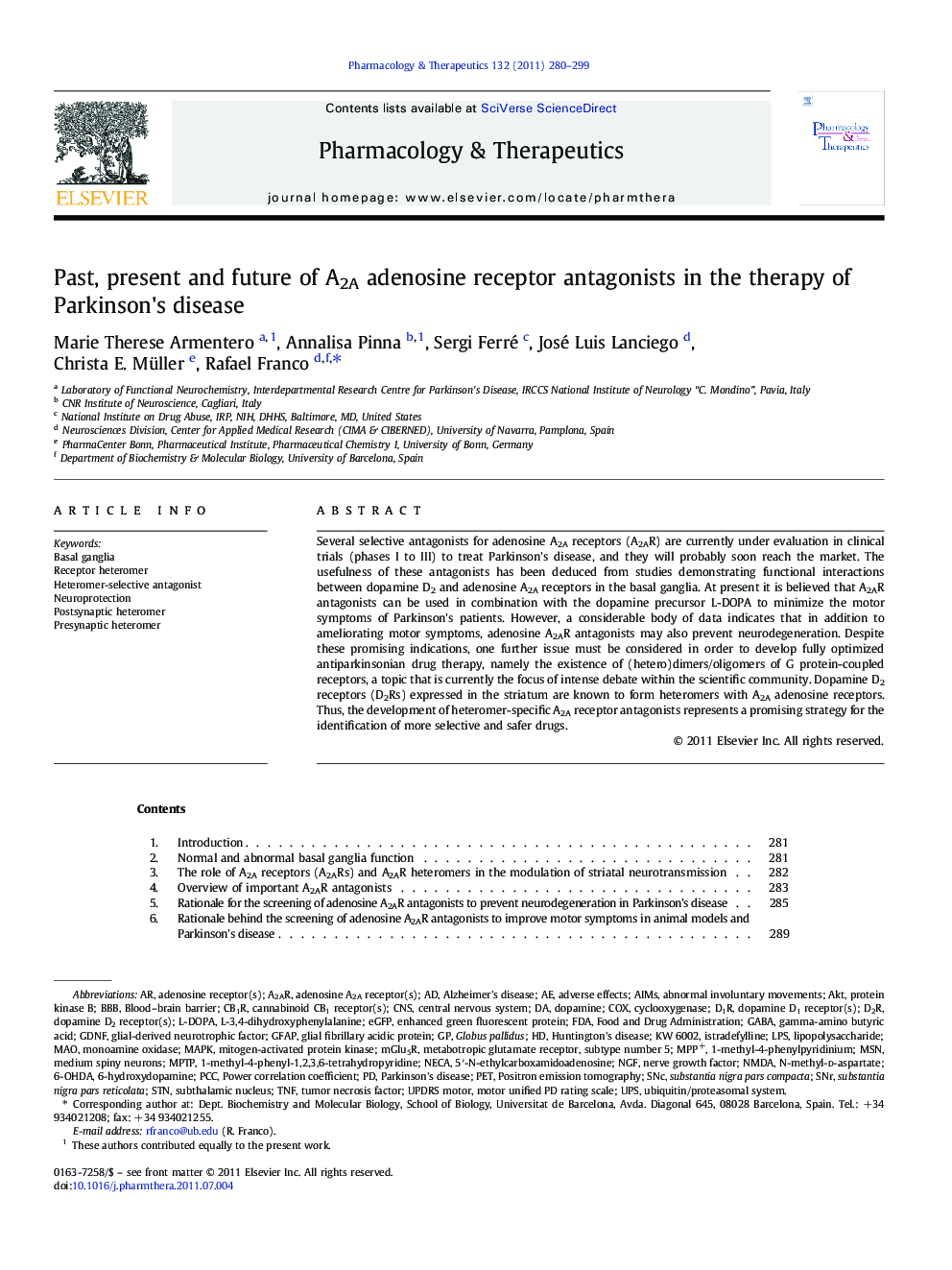| Article ID | Journal | Published Year | Pages | File Type |
|---|---|---|---|---|
| 2564094 | Pharmacology & Therapeutics | 2011 | 20 Pages |
Several selective antagonists for adenosine A2A receptors (A2AR) are currently under evaluation in clinical trials (phases I to III) to treat Parkinson's disease, and they will probably soon reach the market. The usefulness of these antagonists has been deduced from studies demonstrating functional interactions between dopamine D2 and adenosine A2A receptors in the basal ganglia. At present it is believed that A2AR antagonists can be used in combination with the dopamine precursor L-DOPA to minimize the motor symptoms of Parkinson's patients. However, a considerable body of data indicates that in addition to ameliorating motor symptoms, adenosine A2AR antagonists may also prevent neurodegeneration. Despite these promising indications, one further issue must be considered in order to develop fully optimized antiparkinsonian drug therapy, namely the existence of (hetero)dimers/oligomers of G protein-coupled receptors, a topic that is currently the focus of intense debate within the scientific community. Dopamine D2 receptors (D2Rs) expressed in the striatum are known to form heteromers with A2A adenosine receptors. Thus, the development of heteromer-specific A2A receptor antagonists represents a promising strategy for the identification of more selective and safer drugs.
